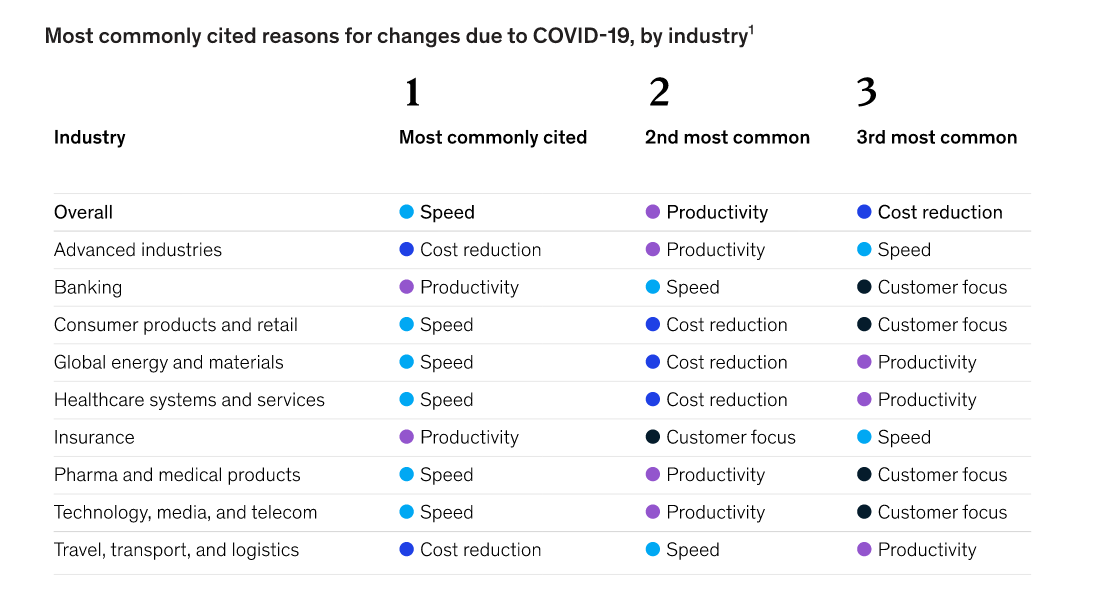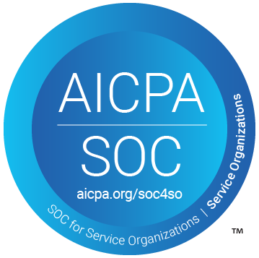This year’s pandemic has pushed businesses across industries to undergo major shifts in record-time. Enterprise organizations have been forced to launch new digital transformation initiatives, reconsider strategic directions and adapt to fully remote work environments — with business outcomes hinging on the speed at which they could make these changes happen. Email marketing teams have been at the forefront of these massive shifts, with many brands reconfiguring not only their messaging but the frequency and speed at which they respond to existing conditions.
“Many organizations realize the value of speed during these times of flux and uncertainty,” writes McKinsey authors Aaron De Smet, Elizabeth Mygatt, Iyad Sheikh, and Brooke Weddle in a September 2020 report covering a recent survey of more than 850 business executives and directors, “This need is reported significantly more often than factors such as the need to reduce costs, increase productivity or engage more effectively with customers.”

Businesses rely on speed to drive measurable outcomes
In fact, speed is so crucial to business outcomes that the McKinsey report confirms, as adrenaline from this year’s crisis-response period begins to subside, companies will have to figure out how they can gain speed by design (versus as a reactionary tactic).
“Faster organizations outperform others by a wide margin on a range of outcomes, including profitability, operational resilience, organization health and growth,” reports McKinsey.
The email creation teams and marketing operations departments responsible for building and executing their company’s email programs have witnessed firsthand how speed impacts business outcomes. This year has seen email volumes skyrocket as businesses turned to their email lists to maintain customer engagement and drive revenue. With major shifts in consumer patterns and behaviors happening overnight, enterprise organizations were forced to shrink their usual email creation routines.
The companies that succeeded were able to turn their emails programs around in a matter of days versus the usual weeks it would often take to get a single email campaign out the door.
McKinsey isn’t the only research firm touting the benefits of speed. Nearly two years ago, Deloitte Digital’s Chief Creative Officer Alan Schulman wrote about the need for organizations to develop faster agile content creation systems.
“In today’s world, in order to leverage real-time data such as geolocation, current events, consumer whereabouts, persona-based journey ‘moments,’ and even first party data, the time it takes to get branded marketing communications content and campaigns to market can require both cross-functional collaboration and agile creation models/cycles that can move deployment from months to weeks—and even days to hours—in some cases,” wrote Schulman.
What’s slowing us down?
It’s clear businesses benefit from adopting faster routines — but creating a more agile workforce focused on speed takes more than simply “doing things faster.” The executives McKinsey surveyed said, for their organizations to adopt a culture of speed, they would have to rework many long-standing constructs within the business.
“Across industries, executives most frequently named organizational silos, slow decision making, and lack of strategic clarity as factors that limit the rate at which their organizations get work done,” according to McKinsey’s report, “While organizational silos may be a more common challenge, the findings show that slow decision making is the factor that most strongly separates slower organizations from faster ones.”
Other factors creating obstacles to speed: Rigid policies and formal hierarchies. Add on top of these challenges slow approval processes, outdated legacy technology and non-collaborative work environments and you have an enterprise organization not only lacking speed, but incapable of adopting streamlined processes built on efficiency.
“We have a tremendous bounty of real-time data and contexts to leverage — if we can get our old habits and silos out of the way,” writes Schulman, speaking directly to how faster processes can benefit content, which includes a business’ email marketing programs.
For the business teams tasked with building out their organization’s email marketing, and the marketing operations teams that enable email creation processes, the struggle is real. MOPs teams know firsthand the difficulty of moving an email campaign from concept to delivery. Stensul’s research found that 80% of brands take one week or more to produce a single email — with many teams devoting as much as two to four weeks of their time to the email creation process.
The solution? Agile technology platforms that enable collaboration
So how do enterprise organizations — often made up of thousands of employees spread out over hundreds of business units and geographic locations — build a culture of speed? To produce faster results, the executives surveyed by McKinsey have sharpened their focus on customers, improved communication between business departments to expedite decision making and collaboration and invested in technology that increased productivity.
“In our experience, making greater use of technology to enable a hybrid working model can provide an organization with greater flexibility and improved productivity,” writes McKinsey’s authors, “Furthermore, organizations can gain speed and better meet customer needs by embedding technology within their ecosystem.” McKinsey’s survey found nearly 25% of the executives they polled believe technology and digital enablement is the answer to quickly enhance engagement with customers and employees.
Schulman’s column, which focuses on bringing speed to the content creation process, says organizations wanting to adopt agile content development systems should focus on three key areas:
- An organizational model designed for cross functional collaboration.
- An ideation and creation process model built on agility that allows teams to rapidly cycle through insights, content ideas, iteration and testing routines.
- Technology platforms that enable teams, “To get content created, approved, published and distributed to targeted markets and targeted personas faster and more efficiently.”
“As we evolve from campaigns that turn on and turn off to staying relevant in the world of the ‘always on’ consumer, the imperative for a new, more agile approach to creative and content creation is clear,” writes Schulman.
Fast organizations need agile technology platforms
When it comes to developing faster processes, enterprise organizations must invest in technology platforms that enable agile work environments. Today’s technology solutions must be designed for collaborative processes with low-code or no-code features that make the platform accessible to professionals of all technical levels throughout the organization.
Outdated legacy technology that fails to integrate with other tools and platforms not only slows down business processes, it perpetuates siloed systems that work against agility and speed.
“None of these challenges is new, but they can feel more acute because of the pace of change is increasing and the COVID-19 crisis poses an immediate threat to revenue,” writes McKinsey’s authors, “When asked for specific ways in which organizations have made changes to deliver results faster, leaders most frequently report increasing productivity through the use of technology, sharpening their focus on customers, and improving communication to expedite decision-making and collaboration.”
Stensul understands the need for organizations to work at a faster pace — so much so that we centered our email creation platform on the ability to speed up email production times. Brands that are using stensul have dramatically reduced the time it takes to create emails, without having to add more staff or take up more company resources. The platform’s accessibility enables streamlined creation and approval processes and its no-code features democratizes its functionality — allowing copywriters, designers and marketing technologists all to work within a single environment.
As enterprise organizations move forward into a post-COVID world, the speed of the business will continue to play an integral role in its success. The companies that adopt agile technology platforms to enable faster processes will be the ones that survive current conditions and thrive in the future.



